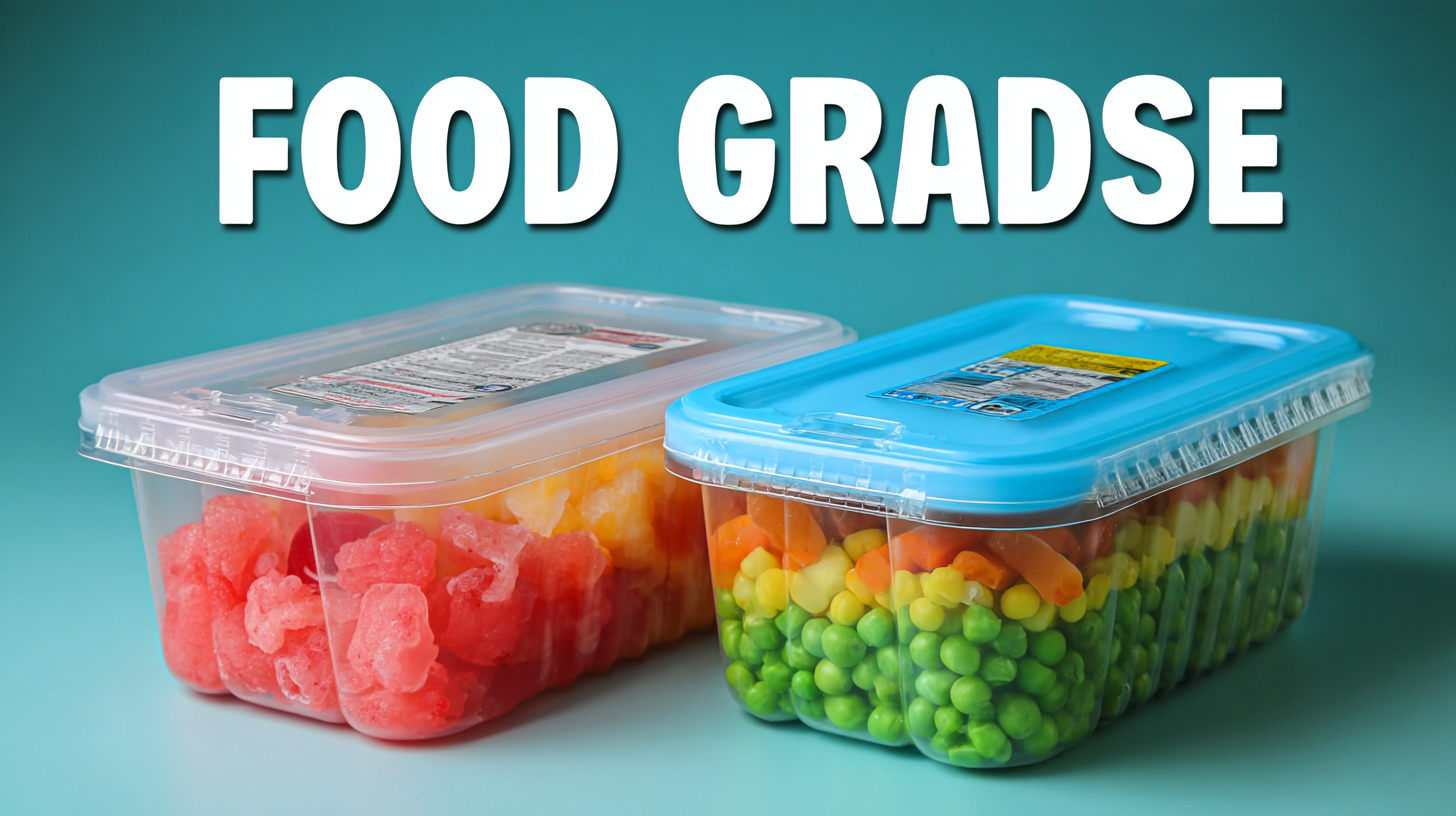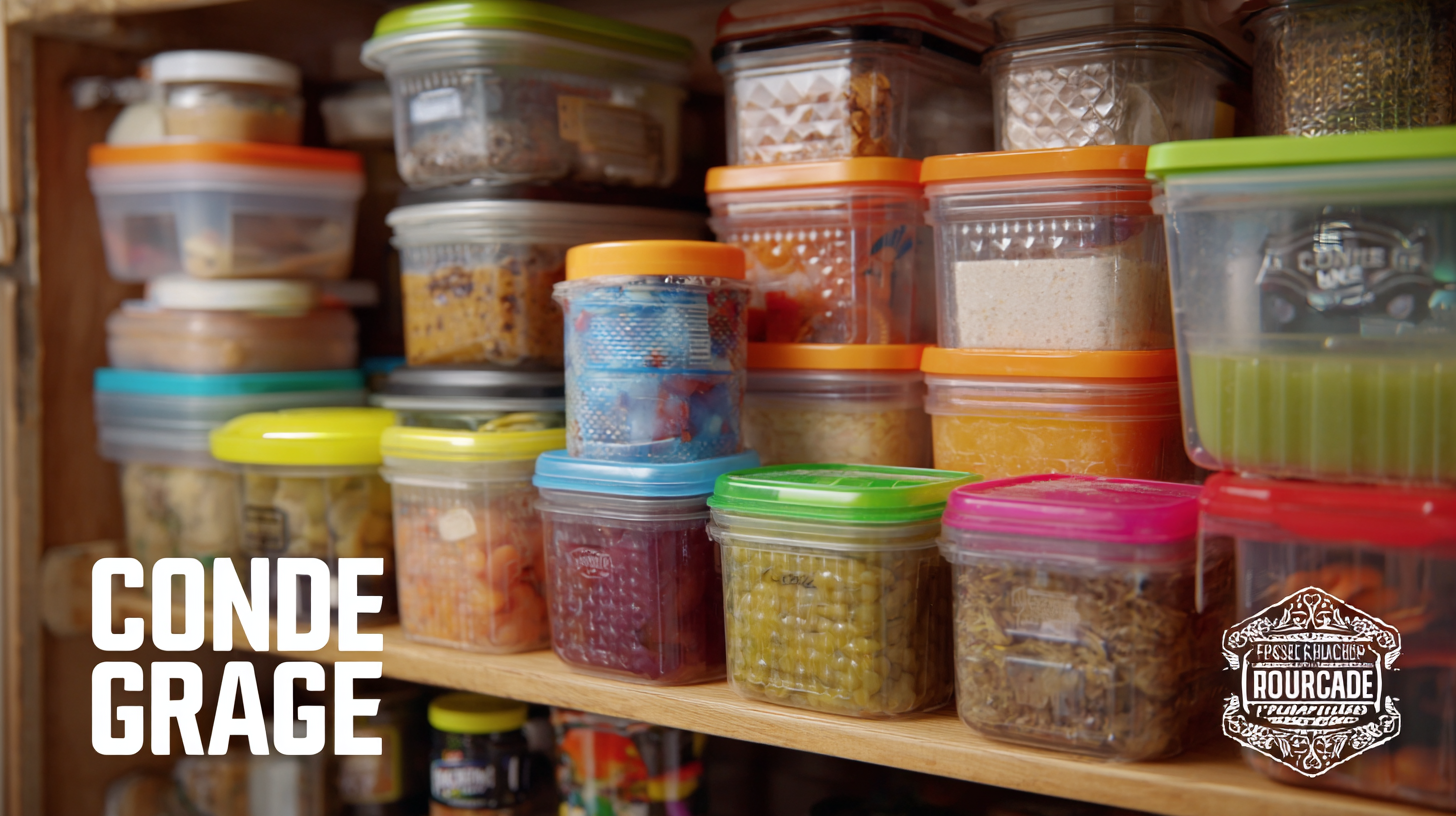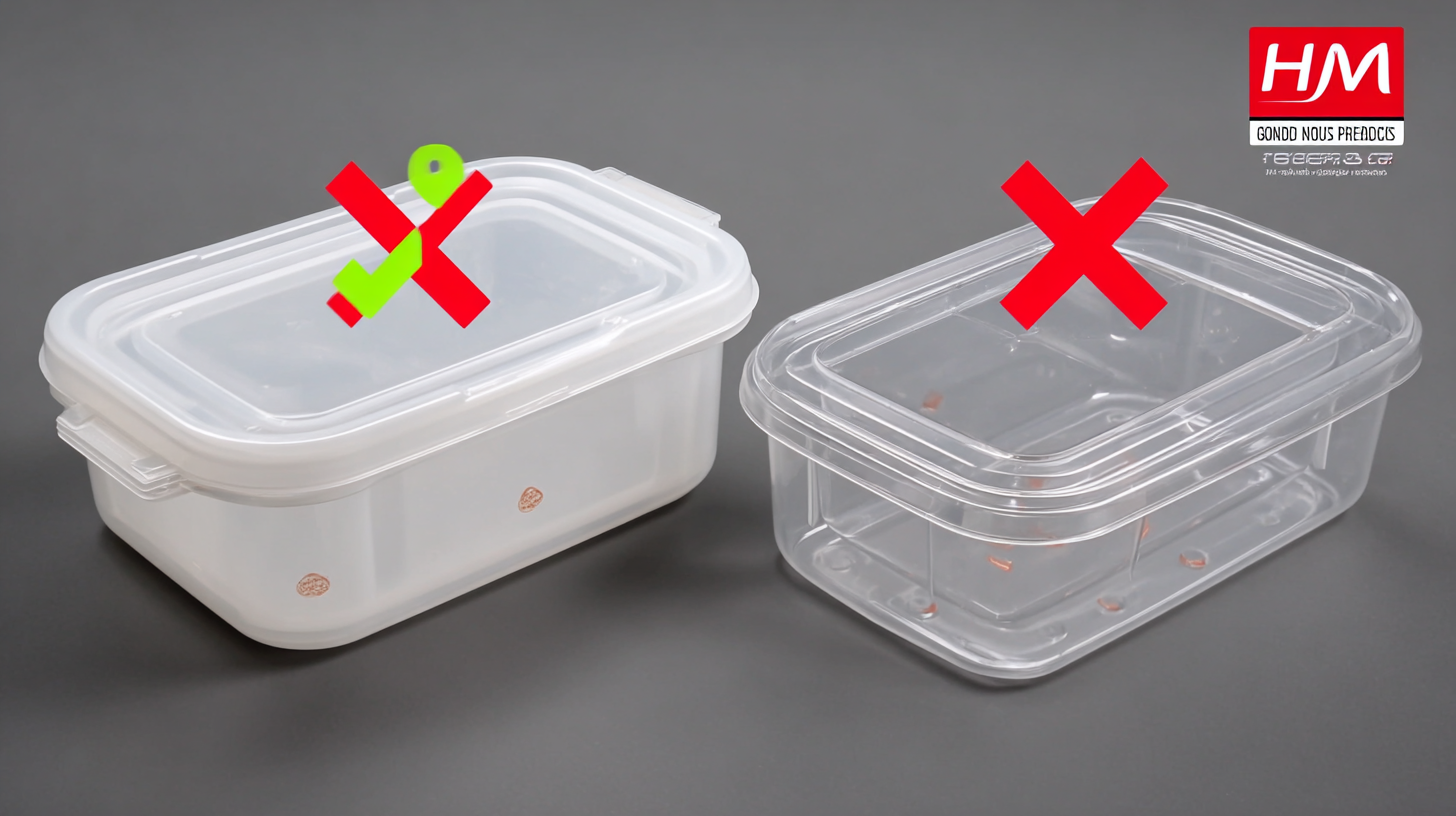
Common Issues with Food Grade Plastic Containers You Must Know
In recent years, the use of Food Grade Plastic Containers has become increasingly popular due to their convenience and versatility in food storage and transportation. However, while these containers offer significant benefits, there are also common issues that consumers should be aware of to ensure food safety and quality. From concerns about leaching chemicals to the potential for bacterial growth, understanding the nuances of food grade plastics is essential for anyone looking to make informed choices. This ultimate guide will explore the various challenges associated with Food Grade Plastic Containers, providing insights into how to select the right products, maintain their integrity, and ultimately safeguard your health. Whether you're a home cook, a food industry professional, or someone who is simply looking to store leftovers, this comprehensive overview will equip you with the knowledge necessary to navigate the complexities of plastic food storage effectively.

Common Misconceptions About Food Grade Plastic Containers You Should Be Aware Of
When it comes to food grade plastic containers, misconceptions often cloud consumer judgment. While many believe that all food-safe plastics are interchangeable, it's crucial to understand that not all plastics labeled as "food grade" meet the same standards. According to recent reports, a significant percentage of consumers remain unaware that even food-grade plastics can leach harmful chemicals into food, especially when exposed to heat or repeated use. Industry studies have shown that nearly 30% of consumers mistakenly assume these containers are completely safe for long-term storage, which is a dangerous assumption.
Additionally, the perception that disposable packaging is inherently more hygienic or environmentally friendly has come under scrutiny. A study published by the Chinese Consumer Association revealed that many consumers are now more considerate of over-packaging and food waste issues. The survey indicated that about 65% of participants expressed concern about the environmental impact of single-use plastics. This awareness is prompting a shift towards a more sustainable mindset, pushing for better regulatory frameworks to address over-packaging and encourage the use of safer, reusable food containers. As regulations continue to evolve, consumers must stay informed and critically evaluate the safety and environmental implications of the products they use.

Impact of Temperature Variations on Food Grade Plastic Longevity
Temperature variations can significantly impact the longevity and safety of food-grade plastic containers. When exposed to extreme heat or cold, these containers can undergo changes in their structural integrity, leading to potential leaching of harmful chemicals into food. For instance, high temperatures can cause the plastic to warp or become brittle, compromising its functionality and increasing the risk of contamination.
On the other hand, prolonged exposure to cold can make certain plastics more rigid and susceptible to cracking, especially if they are not designed to withstand such conditions. This is particularly important for those storing food items in freezers, as the failure of a container can lead to spills and spoilage. To maximize the lifespan of food-grade plastic containers, it is essential to store them in stable temperature environments and avoid drastic shifts that can weaken the material.
Understanding these effects helps consumers make informed decisions about safe food storage practices.
Understanding the FDA Certification Process for Food Grade Plastics
When it comes to food storage, the safety and reliability of the containers used are paramount. Understanding the FDA certification process for food grade plastics is essential for manufacturers and consumers alike. The FDA, or the Food and Drug Administration, evaluates food grade plastics to ensure they do not pose any health risks. According to a report by the Plastics Industry Association, over 80% of food packaging in the U.S. is made from plastics, underscoring the importance of rigorous safety standards in this sector.
The FDA's certification process involves a thorough review of the materials used in the manufacturing of food grade plastics. This includes assessing the chemical composition, potential migration of substances into food, and compliance with regulations. A study by the National Institute of Health points out that non-compliance with these regulations can result in hazardous chemical leaching, which can lead to health risks such as endocrine disruption. As consumers become increasingly aware of the importance of food safety, manufacturers must prioritize obtaining FDA certification to ensure their containers meet strict health standards, ultimately fostering confidence in food safety practices.

Chemical Leaching Risks: What You Need to Know
When using food grade plastic containers, one of the primary concerns is chemical leaching. Many plastics can release harmful chemicals, especially when exposed to heat or acidic foods. Substances like bisphenol A (BPA) and phthalates have raised red flags due to their potential endocrine-disrupting effects. Understanding the risks associated with these chemicals is crucial for ensuring the safety of the food you consume.
To minimize chemical leaching, opt for containers labeled as “BPA-free” or those made from safer materials like glass or stainless steel. Additionally, avoid microwaving food in plastic containers, as high temperatures can accelerate the leaching process. Always check for proper storage guidelines, as certain foods and liquids may react differently with specific plastics.
Lastly, it's beneficial to frequently replace your plastic containers, even if they appear to be in good condition. Over time, wear and tear can create micro-cracks where harmful chemicals can leach into your food. By staying informed and taking these precautionary steps, you can significantly reduce the risks associated with chemical leaching from plastic containers.
Common Issues with Food Grade Plastic Containers You Must Know - Chemical Leaching Risks: What You Need to Know
| Issue | Description | Risk Level | Preventive Measures |
|---|---|---|---|
| Chemical Leaching | Migration of chemicals from plastic to food, particularly with heat or acidity. | High | Use BPA-free containers; avoid heating plastics. |
| Durability Issues | Containers may crack or break over time, leading to contamination. | Medium | Choose high-quality containers; inspect regularly for wear and tear. |
| Odor Retention | Plastics may retain odors from previous contents, affecting food taste. | Low | Wash thoroughly; store with odor-absorbing materials. |
| Staining | Certain foods can stain the plastic, leading to aesthetic issues. | Low | Use glass or stainless steel for staining foods; opt for colored plastics. |
| Microbial Growth | Scratches and wear can harbor bacteria, posing health risks. | Medium | Regularly clean and replace damaged containers. |
The Shift Towards Biodegradable Alternatives in Food Grade Plastics
As the world becomes increasingly conscious of environmental issues, the shift towards biodegradable alternatives in food grade plastics is gaining momentum. Traditional plastic containers, while convenient, contribute significantly to pollution and landfill waste. Biodegradable options, made from renewable resources such as cornstarch or sugarcane, offer a sustainable solution that decomposes naturally, reducing their ecological footprint.
When transitioning to biodegradable food grade plastics, consider the following tips: First, always check for certifications that ensure the materials are indeed biodegradable and compostable. Second, be mindful of the conditions that facilitate their degradation, as many biodegradable plastics require specific environments to break down effectively. Lastly, pay attention to the product’s lifecycle — choose options that are designed for multiple uses before being composted to maximize sustainability.
As consumers demand more eco-friendly products, companies are responding by innovating and creating new biodegradable materials. Embracing these alternatives not only supports environmental sustainability but also encourages a market shift towards greener practices, ultimately paving the way for a cleaner planet.
